Subscribe by Email
-
Recent Posts
Author Archives: Susan
Bring Up the Bodies
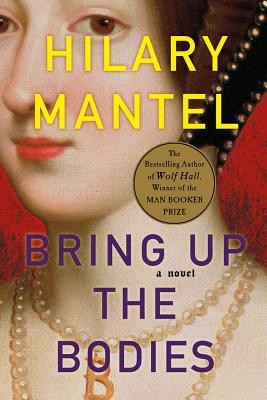
I coincidentally was reading Hilary Mantel’s historical novel “Bring Up the Bodies” around the same time as I was watching the “Diamond Jubilee” celebration, commemorating Queen Elizabeth II’s amazing 60 years on the throne of England. Perhaps there’s not a direct correlation, but I’m definitely getting my fix of English royal history lately, with its influential monarchs and their reigns of power, accomplishments, struggles and scandals. It’s fascinating material to be sure.
Mantel’s latest novel about Thomas Cromwell, the court of King Henry VIII and the destruction of Queen Anne Boleyn has received unanimous gushing reviews as did her previous book of their earlier years, “Wolf Hall,” which was awarded the 2009 Man Booker Prize. The print critics love her, with Janet Maslin of the New York Times going as far to say that “Bring Up the Bodies” is “this year’s best beach read” and the “one must-read of the season.”
Best beach read? Hmm, I had to read it. But now that I’m done, I can tell you, if you like “War and Peace” or Shakespeare on the beach then perhaps you will definitely like this one. Otherwise, I’d stick to something lighter and easier to sink into. “Bodies” definitely has the elements of a beach book, with power plays, intrigue, rumors, gossip, revenge, adultery, violence, but it swirls around for quite a while, muting its impact. Its narrative language though beautiful by Mantel is a bit of a challenge for the beach; it’s not Olde English but it’s not exactly contemporary either. You’ll have to work a bit to get the array of characters and who is speaking when and what is being said. At times it can be a bit confusing or even a slog to read, but I did successfully plow through it and came away with a more vivid picture of the poisonous atmosphere at the court during Anne Boleyn’s last months.
You don’t have to read its predecessor “Wolf Hall” to understand “Bring Up the Bodies”; I went right to the latter one, which is meant to be the second in a trilogy — all told from Thomas Cromwell’s point of view. Cromwell was King Henry VIII’s right hand man, his secretary and power broker, who comes to believe he must destroy the Queen before she destroys him. Mantel paints him as more human than just ruthlessly evil, which is how he is often portrayed, though he’s still cleverly shrewd and harsh in the end.
The book takes place over nine months from 1535 to 1536. As it begins, Queen Anne Boleyn has replaced King Henry VIII’s first wife Katharine of Aragon with much ado, leading the King to break with the Catholic Church in Rome. All is momentarily at peace. But after three years, the king grows restless as Anne is unable to produce a male heir and he begins to favor Jane Seymour. Thereafter the Queen’s days are numbered. Cromwell uncovers a web, eventually arresting her along with five men on trumped up charges of adultery and incest (with her brother). Whether she is actually guilty as charged is a mystery preserved in the book, though it sides with it being unlikely. In an interview, Hilary Mantel has said the Queen gives the impression of being guilty, whether or not she really is, is not known.
Surely the book is quite dark; everybody’s out for themselves and trying to gain their advantage with the King and the court. It seems Machiavellian. Some have sympathies with the last Queen, while others are aligning with the future, Jane Seymour. The plot gangs up on Anne Boleyn, and it is quite chilling to read about a woman’s place then and the abuse of the court’s power — all because Henry VIII wanted a new wife. There’s not really a redeeming character in the book to latch onto, and despite what it’s about, not a lot of action. I was hoping for more. It’s mostly filled with the verbal sparring, court gossip and posturing amid its unseemingly cast. I took away quite a bit from it but not without considerable persistence and effort — something that I don’t hope for in my next (real) beach read. Continue reading
Posted in Books
9 Comments
Battle Hymn of the Tiger Mother
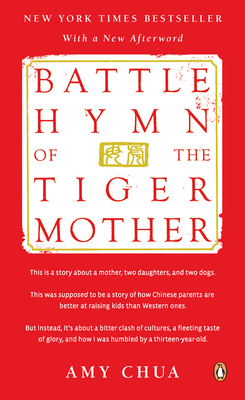
“Battle Hymn of the Tiger Mother” ignited a firestorm last year, which I successfully steered clear of until my book group picked it to discuss this week. I can tell the book group moms are ready to sink their claws into this memoir and tear it apart, knowing good and well it’s about a “tiger” mother who uses harsh parenting practices to raise and gear her two daughters for success.
No TV for them, or sleepovers, or playdates, or computer games, or grades less than an A; these girls must be fluent in Chinese and practice endless hours of piano and violin after school and even on vacations. To their mom, childhood is less about having fun than being “a training period, a time to build character and invest in the future.” The Chinese parenting approach, she says, is very different from the Western way, which values independence, creativity and questioning authority. Western kids are allowed to follow their “passion,” which just turns out, she says, to be 10 hours on Facebook which is a total waste of time and eating digusting junk food.
For the Chinese, she says, authority is always to be respected and kids’ self-esteem isn’t a concern; parents regularly criticize their kids (she refers to her daughter as garbage at one point) and expect more from them (she rejects their inadequately made birthday cards). Chinese parents also decide all their activities and what’s best for their children. Kids, in turn, obey and don’t talk back. They owe their parents everything.
Author Amy Chua sets up “Tiger Mother” as a “clash of worldviews”; there’s the weak, easy Western way of child-rearing, she seems to say, and the stronger, harder to follow Chinese approach, which she does her best to adhere to with her daughters while living in Connecticut, where she’s a law professor at Yale. Her husband, a law professor there too, plays only a small peripheral role in this memoir.
In many ways her book is like stomaching the world of a type -A drill sergeant who pushes her kids as prodigies and family to the brink. It’s insufferable in parts what she believes and how she acts. And yet I was surprisingly glad to have read it (I didn’t hate the book. It’s even well told and isn’t heartless). I don’t believe the West has all the answers on child-raising, nor by this account does the East either. Her book raises valid questions about parenting. Perhaps there’s some kind of middle ground or hybrid approach worth exploring or trying, which Amy Chua herself concedes towards the end, though she doesn’t seem ready to reconcile to that way of thinking.
She says her memoir has been greatly misunderstood; that it’s really “supposed to be funny, partly self-parody” about her own transformation as a mother. Throughout the book, she seems to know she’s an overbearing, controlling fanatic to her kids, but that doesn’t seem to stop her any; only the possibility of losing her daughter seems to affect her path, which is a bit sad. You feel for the kids, no doubt. It would be comical perhaps if it weren’t all so borderline true to what she’s like. I did laugh some because she really is a piece work, this tiger lady. Continue reading
Posted in Books
4 Comments
The Be Good Tanyas in Concert

I thought the Be Good Tanyas had broken up years ago and were done for good, but apparently they’re baaaack! I saw them in concert last evening, and they have other tour dates planned as well. The Vancouver folk-bluegrass trio had gone on hiatus around 2007/2008, after touring extensively behind the group’s three popular indie albums: Blue Horses (2000), Chinatown (2003) and Hello Love (2006). After that, the girls burnt out and opted for individual projects. Last night they seemed back in old form: Trish on the banjo and guitar, Samantha often on the mandolin and Frazey at the vocals helm (they were backed by a bass player and a drummer as well). The girls were a bit disorganized between songs, but played old favorites soulfully and as if they were happy to be back. I recognized most of their songs, though it had been a while. They produce a folky cool sound, though you often can’t understand all their words because of their impressionistic, mumbled renderings, but nonetheless the songs’ feelings shine through. Here is the set list from their May 17 concert in Calgary:
1) In Spite of All the Damage
2) Only in the Past
3) Reuben
4) Ootischenia
5) Colorado Girl (Townes Van Zandt song)
6) The Littlest Birds
7) Human Thing
8) One More Cup of Coffee (Bob Dylan cover)
9) Dogsong (aka Sleep Dog Lullaby)
10) Horses
11) Birds (Neil Young cover)
12) Waiting Around to Die
13) September Field (new song)
14) For the Turnstiles
15) Song for R.
16) Here Comes the Sun (Beatles cover)
17) A Thousand Tiny Pieces
18) Light Enough to Travel Continue reading
Posted in Music
Leave a comment
The Devil’s Teeth

For a visit to the San Francisco Bay Area last weekend, I got caught up in the book “The Devil’s Teeth” about the Farallon Islands and the great white sharks out there, 28 miles from the Golden Gate Bridge. Published in 2005, the book had been knocking around my book shelves for years, a present from my older brother who told me I must read it. Indeed he was right, especially while in the Bay Area where I could stare out to sea, hoping to catch a glimpse of the rocky and remote Farallones on the edge of the vast Pacific.
The Farallones have long been a mysterious and dangerous island chain, where nasty storms and waves could be treacherous. Just last month tragedy struck when five crew members attempting to round the islands were killed during the annual Farallon sailboat race when waves knocked them overboard and washed their boat onto the rocks. Similarly in April 1982, six others died when a storm blasted the Farallon race.
The Farallones are not for the light of heart and only a handful of scientists are granted access to be on the southeastern island, which is a bird sanctuary. It’s a place filled with bird guano and surrounded by waters infested from September to November with great white sharks.
Such is the environment journalist Susan Casey threw herself into, joining biologists Peter Pyle and Scot Anderson on the Farallones to monitor the sharks and their attacks on seals. Her book is heady stuff, as if you can feel these 18-foot predators swimming around you under their small boat. It’s eerie and informative, giving a broad picture of the sharks, how they hunt during the day, chomp on surfboard decoys and are segregated with the larger dominant “Sisters” staying in different areas from the males. It also recounts the unlikely history of the islands where in 1942 more than 100 people from the military and government and their families once lived.
Susan Casey can write the daylights out of nature and science, but it’s her personal anecdotes and adventures of life on the island and in the shark-invested waters with the biologists and a bold sea urchin diver there that are most entertaining and gripping, especially her three-week solo stay anchored on a yacht off the island, which gets truly harrowing when a storm hits. “Even as the place was trying to kill me,” she writes early on, “I had never felt more alive.” Such sentiments capture the island’s hold on those who work and return there every year — to a place, she writes, where “only wild things came.”
In the end the price she pays to get the story amid increasing managerial restrictions on the island and others pay to continue their shark pursuits is very high. Heads roll, for sure, but luckily all get through alive. The fallout is heavy though and leaves one wanting to know more about what happened to all in the aftermath. As for the sharks, hopefully they’ll continue to come back to the Farallones and be studied for many more decades to come.
“The Devil’s Teeth” definitely made me want to read Susan Casey’s latest book “The Wave: In Pursuit of the Rogues, Freaks, and Giants of the Ocean” somewhere down the line — as she is a writer who combines science and adventure in a truly intriguing and informative way. Continue reading
Posted in Books
Leave a comment
The Art of Fielding
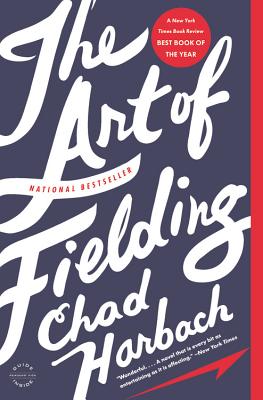
With the opening of baseball season, I sought out “The Art of Fielding” as my next read. I have long been an avid follower of America’s pastime and once worshipped Cincinnati’s Big Red Machine circa 1973 to 1979. The team’s catcher Johnny Bench is still my all-time baseball hero. So I was psyched to pick up Chad Harbach’s debut novel, which I knew just two things about: (a) that it was about baseball and (b) that it had made the New York Times 10 best books of 2011 list: a combination of which definitely piqued my interest.
But I didn’t realize “The Art of Fielding” would be a long, sprawling novel of 512 pages nor did I know its storyline, characters, or the gay and straight relationships within. I went in blind and was rewarded with a very entertaining and heartfelt read. It enticed me with its strong sense of place of a Midwestern college campus and main characters who I felt entwined to by the end to the point that I’d miss them when all was said and done.
Many probably know, the novel’s about a baseball star shortstop named Henry Skrimshander who’s recruited and mentored to play at a small college along the shores of Lake Michigan. On the field, Henry is as good as gold, tying the record for innings without an error and catching the attention of major league scouts; that is until one game a throw gets wildly away from him and beans a teammate, forever affecting the fates of five people. There’s Henry, who loses his way amid self-doubt and team captain Mike Schwartz, who’s mentored Henry at the expense of himself; and college president Guert Affenlight, a Melville scholar, who finds himself falling dangerously in love with a student, Owen Dunne, who’s Henry’s gay roommate; and finally Pella Affenlight, Guert’s daughter, who returns to the college town to start again after a failed marriage.
It’s a coming of age story primarily about male relationships and friendships, and about love and loss. It’s considerably more than just a baseball story (you don’t necessarily need to be a baseball fan to enjoy it), though the sports writing in the book is quite impressive. Author Chad Harbach definitely knows the sights, sounds and feelings around a baseball diamond, and pursues the mental aspects, as well as the blood, sweat and tears an athlete goes through with great insight. The novel is quite dark at points as the main characters all seem to be going through a tipping point or break down at the same time. It’s likely your college anxieties will resurface as you speed through “The Art of Fielding” hoping for a brighter day for Henry, Schwartzy, Guert and Pella. I also enjoyed the school’s connection to Herman Melville, which the author creatively conjures toward the beginning of the novel.
You won’t soon forget this book as it breathes considerably life into its scenes. You go through a lot amid its 512 pages, rising and falling with its cast. And though it’s long, it’s a fast, breezy read that keeps you coming back (though you might not like some things that happen) until its final conclusion plays out. Kudos to Chad Harbach for his engaging debut hit, which apparently has been optioned by HBO in the hope of turning it into a series. Continue reading
Posted in Books
10 Comments
In Memoriam
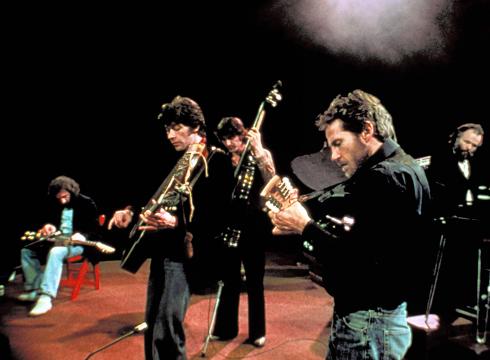
Levon Helm (1940-1912) with The Band; a sad day losing such a legend in music.
No matter how many times I listen to The Band’s music or see the concert film “The Last Waltz,” (which I did again last night), I can’t seem to shake my focus from Helm’s voice and his playing and how he infused the music with so much. His singing on “Up on Cripple Creek,” “The Weight,” “Ophelia” and “The Night They Drove Old Dixie Down” is simply magical and forever near the top in the annals of rock-n-roll.
For two fascinating interviews with Levon, check out the 1993 and 2007 talks he had with NPR’s Fresh Air here. Continue reading
Posted in Music
2 Comments
A Night to Remember
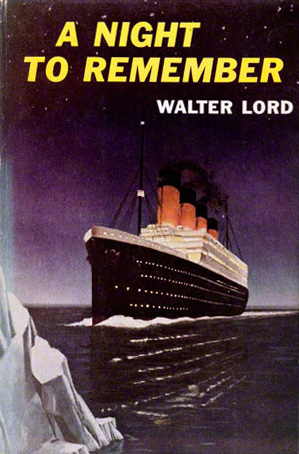
It was a hundred years ago last night at 2:20 a.m. the RMS Titanic sank after hitting an iceberg at 11:40 p.m. It’s humbling and shocking even now, thinking of the world’s biggest, fastest ship up to that point (deemed “unsinkable”) and more than 1,500 of its passengers disappearing on its maiden voyage into the icy waters of the North Atlantic. Titanic’s story is one so visual now to our imaginations, as if it were engraved into our DNA. It’s long since taken on mythological proportions.
With its 100th anniversary, I couldn’t help but take the plunge into the massive coverage of all things Titanic. I’ve seen a few Titanic TV specials recently: one on its engine room staff that worked so hard to keep the lights on; another on the iceberg that hit it; another on James Cameron’s analysis of the underwater wreck site that was found in 1985; and finally the 1958 film “A Night to Remember,” which is taken from this book of the same name.
But there’s so much more on Titanic: new research, new books, new theories; all recently banking on the 100th anniversary. But what intrigued me was to go back to the very first book on it, Walter Lord’s classic “A Night to Remember” from 1955. After all, I had never read it before this.
Indeed it is a great source for what happened on the night of April 14-15, 1912. As Lord wrote: “This book is really about the last night of a small town.” And for sure, Titanic was that big and carried that many people. It was like a microcosm of Edwardian society, with cabins and luxuries designated by class, and women and children given first seats on the lifeboats. Never again would the world be quite like this in such circumstances.
“A Night to Remember” reads as if the action were happening right then and there, making it quite dramatic as the tragedy unfolds. From the late sighting of the iceberg, to the damage assessment, call to lifeboats, distress signals, eventual sinking and freezing rescue, Lord pieces together such a vivid picture, strengthened by the 63 survivors he spoke to in writing the book. The quotes of conversations he uses, which enliven the account, are not made up but are amazingly given as remembered by survivors.
“Night” reads a bit like a Jon Krakauer book. And indeed, Walter Lord was one of the first writers to bring journalistic narrative to history, which we are so much better for. The book’s not weighed down with a lot of documentation, speculation or background (for that there are many others), but it briskly recounts in an organized, accurate way what happened and when on that fateful night and the many colorful people involved and lost. Interesting roles are played by Captain Edward John Smith, Titanic’s builder Thomas Andrews, ocean liner president Bruce Ismay, Fifth Officer Harold Lowe (who went back to pick up survivors) and Second Officer Charles Lightoller who survived by balancing with others on an overturned collapsible lifeboat.
After the ship went down, it’s amazing that some of the passengers were able to swim to a couple of these collapsible boats in the 28-degree Fahrenheit water and somehow survive until the rescue ship picked them up a few hours later. “Night” conjures scenes like these that you won’t believe and won’t be able to forget. It makes you wish you could change all the little circumstances that led up to the disaster: if only the Titanic weren’t going so fast through an ice field on a moonless night, or if only they saw the iceberg sooner, or if only the ship the Californian 10 miles away came to their distress, or if only they loaded the lifeboats with more people — or, or, or ….
It’s a great book that can do all that. My only wish is perhaps that author Walter Lord had written an afterword on it that went into the disaster’s hearings a bit. Some of the survivors’ testimony would have been quite interesting, too. But still “A Night to Remember” is quite a night, and there’s more interesting details in Lord’s book “The Night Lives On” from 1986. Sadly he died in 2002, but not before consulting on that other Titanic movie you might have heard of. Apparently Lord once crossed the Atlantic on the RMS Olympic, the Titanic’s sister ship in 1926. So perhaps that is where he got his zest for capturing such a sea story.
If you happen to see the 1958 film of it, which you should, watch for Sean Connery, apparently he is amid the chaos as a deck crewman. Continue reading
Posted in Books
4 Comments
The Solitude of Prime Numbers

“The Solitude of Prime Numbers” was a pick from my book club, which I wasn’t expecting to like, though actually I didn’t know anything about. But like a moth to a flame I was completely drawn in by this sad, moving novel from 2008. Chalk it up to author Paolo Giordano’s talented storytelling, which captured my imagination and made me follow these damaged characters with such interest.
It’s a love tale of sorts between two lonely outcasts who are both haunted by childhood tragedies. The girl, Alice, lives with a crippled leg from a ski accident and a bullying father. The gifted boy, Mattia, carries the guilt of abandoning his mentally challenged twin sister who disappears and is never found. Alice and Mattia meet in high school, where they sense in each other a kindred spirit of inner pain. He deals with it by cutting himself, she by being anorexic.
To Mattia, who later becomes a mathematician, he and Alice are like twin prime numbers, “alone and lost, close but not close enough to really touch each other.” They separate when he accepts a research job in another country and she marries a local doctor, leaving issues between them unresolved. But many years later they resurface when their paths cross again.
The ending that follows is a bit inevitable but a surprise all the same. The novel leaves quite an impact long after it is over. I found it a quick read with an underlying suspensefulness that made me keep turning the pages. Its often beautiful passages and clever use of math metaphors are quite transcendent.
I was lucky to come across the author (an Italian physicist) in 2010 at a book festival where he read aloud the chapter in which the twin sister goes missing. I remember it being quite disturbing and yet visual. I thought what is this? And now I know. “The Solitude of Prime Numbers” is a small tour de force on the weight of childhood trauma, love, and loneliness. Apparently it was made into a movie in Italy in September 2010. Continue reading
Posted in Books
2 Comments
The Expats
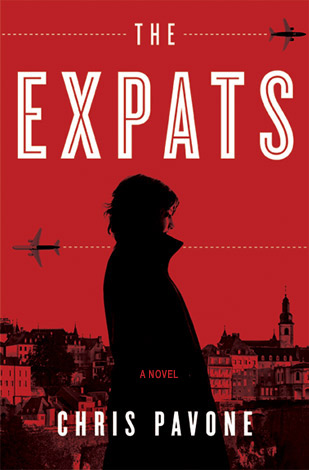
I typically don’t read spy novels or thrillers, but I was looking for a quick read while on a trip that would be entertaining. Chris Pavone’s debut novel “Expats” was so highly recommended on its book jacket (in retrospect don’t trust these) by Patricia Cornwell, John Grisham and others that I thought surely this would be it. Grisham even compared it to the early works of Ken Follet, Frederick Forsyth and Robert Ludlum; oh, but if only this were true.
At the beginning, “Expats” is quite promising and the idea of it intriguing. A husband (Dexter) gets a new job overseas as a computer security analyst for a high-paying client, which leads his wife (Kate) to decide to quit her secret life as a CIA spy and come clean living as an expat with him in Luxembourg. She seeks to end the duplicity in their marriage from her CIA days and to become a stay-at-home mom to their two sons learning the ways of a foreign country. But life gets too boring for Kate, sitting around dreading the laundry and vacant other moms! And soon suspicions lead her back to undercover work, first in regards to a couple she senses aren’t whom they say are, and ultimately to her husband who apparently has secrets of his own. (Quite a marriage.)
The whole expat atmosphere and deceit within the marriage propel the novel and make the plot interesting. But intermixed flashbacks of Kate’s CIA past confuse and distract from the main storytelling. Also the slew of twists at the end are a turn off, as the tireless scheming (I agree here with the Times’ Janet Maslin) “exceeds all sane expectations.” And I mean that in a uncomplimentary way. It turns pretty nuts. I had to fight my way through to finish it, as it no longer seemed plausible or interesting to me. What starts out promising, spins off the rails in rapid form towards the end. Continue reading
The Hunger Games
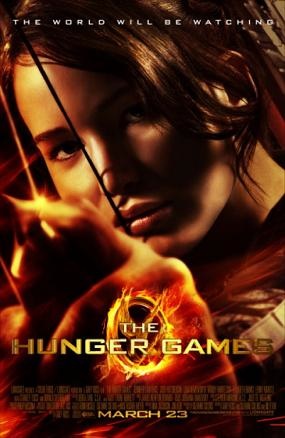
Luckily braving the crowds of opening weekend to see “The Hunger Games” went pretty smoothly. It was being shown in four theaters in the same complex at once, and I pre-bought tickets, which was the only way to go for a seat to a film that raked in a $155 million, the third highest domestic debut of all time. People were ravenous to see the Hunger Games!
And I’m pleased to report the film does a good job of living up to much of the hype and expectations of the very popular young adult novel. It’s a grand and vivid production and hews closely to the novel’s post-apocalyptic story with a grimness that’s palpable. There’s the poverty of District 12, the oppression and inhumane lottery forced on the people by the Panem capital, and the gruesome spectacle of the annual mandatory Hunger Games, where 24 kids are expected to fight to the death.
Gracious, the plot’s levity is limited to a few comic touches from District 12’s mentors Effie and Haymitch and the bombastic Hunger Games announcer, played wonderfully by Stanley Tucci. Luckily the bludgeoning that takes place in the Games is mostly seen from shaky cameras and is somewhat indirect. Though it is still scary and disturbing (so beware of taking young kids susceptible to nightmares); poor Rue, may she rest in peace.
It’s not all gore and guts, but the Hunger Games makes a tense survival test. It follows the book well in many respects: Jennifer Lawrence makes a great Katniss, and Josh Hutcherson earns his way as Peeta. The other “tributes,” too, are efficiently menacing, and the Games (in movie and book) play out similarly on a thrilling scale. But the film skips over some of the nuances of the book, notably who is playing whom and when? Peeta’s alliance with the bad guys is a small ripple compared to it in the book, where he’s generally a more untrusted factor (remember when he trained alone?). And though both he and Katniss play-act their love interest in one another at different points to stay alive, the film misses Peeta’s disappointment in finding out Katniss’s calculated affections for him toward the end of the Games. The young romance is definitely more cloudy and nuanced in the book …
Alas, you only have to wait till November 2013 to see Part 2, “Catching Fire.” Till then: “Happy Hunger Games! And may the odds be ever in your favor.” Continue reading
Posted in Movies
Leave a comment
